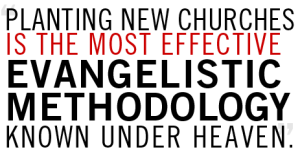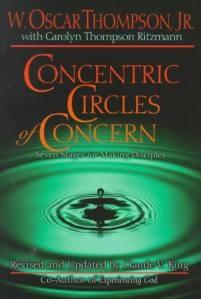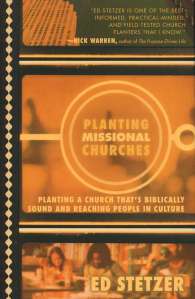Bibliographical entry: Rainer, Thom S. The Unexpected Journey: Conversations with People who Turned from other Beliefs to Jesus. Grand Rapids, MI: Zondervan: 2005
Author Information
Thom S. Rainer holds a PhD from Southern Baptist Theological Seminary and founded the Billy Graham School of Missions, Evangelism, and Church Growth at Southern Baptist Theological Seminary. At the time of publication he was also the president of Church Central and the president of Lifeway Christian Stores. Rainer also pastored many churches and is the president of the Rainer Group for Church Consulting. Rainer is a brilliant author who has written many books including The Unchurched Next Door, Breakout Churches, Simple Church, Raising Dad, and Essential Church. Dr. Rainer is married to Nellie Jo and has three married sons. He resides in the Louisville, Kentucky area.

Content Summary
It only takes reading a few pages of The Unexpected Journey to stir many emotions within the reader. The reader learns very quickly just how important evangelism really is. From the onset, readers become both excited as they experience the life-changing power of Christ in the conversion process and guilty as one realizes how much work there remains to be done. Rainer takes his readers through twelve conversion stories, each of which are real-life accounts of how the Holy Spirit worked in the lives of non-believers to convert them. Rainer shares in these stories the catalysts that the Holy Spirit used to draw each of these people to God. Each story is an amazing, heartfelt account of someone who, at one time, was anti-Christian. However, this book reminds the reader of how powerful and influential the Holy Spirit can be.
As Rainer takes the reader through each of these conversion experiences they learn several things. First, the reader gets a glimpse into the childhood upbringing of the convert. Next Rainer takes the reader through the convert’s exposure to their respective world religion. Along the way, in many of these stories, the reader is privy to bad experiences the person had with Christians or the church. Next Rainer has the convert share about the events that led to their conversion, as well as their actual conversion story. Finally, Rainer has the convert give some simple straight-forward advice on how Christians could reach others in the convert’s former religion.
Rainer takes his reader on a true journey that spans thousands of miles from the West to the Mid-west to the North-east, and back down to the South. Rainer begins in Salt Lake City, Utah with the Higleys. The Higleys were devout Mormons who were granted inside access to the Mormon Church. The Higleys discovered falsities in the Book of Mormon as translators and subsequently came to know Christ in a powerful way. From Utah, Rainer’s journey takes him to Chicago where he talks with a former Jew by the name of Steve Barack. Barack was a devout Jew who came to know Christ through “a cute blonde and a charismatic pastor” (p. 38). Because these people showed Steve the love of Christ, he now serves as pastor of a Messianic Congregational Church he planted in Chicago.
Rainer’s journey took him to meet Dr. Ravi, a former Hindu who was rejected by his family but accepted by his Savior. This former Hindu-turned-Christian went on to serve as Vice President and professor for Midwestern Baptist Theological Seminary (p. 54). After talking with Dr. Ravi in Kansas City, Rainer makes his way to Pittsburgh, Pennsylvania to hear the dynamic story of an atheist who could chew Christians up and spit them out. However, she was no match for the infallibility of the Bible or the love of Christ. Mrs. J., having spent many years running away from God, is now an avid defender of the faith she holds so dear.
Dr. Rainer talked with the Blizards about their conversion from Jehovah’s Witness to Christianity. Their story is a heart-wrenching story about parents who almost lost their daughter because of strict anti-blood transfusion rules in the church. Although they were third generation Jehovah’s Witness, their doubts, the health of their daughter, and a woman with “a pan of chicken” (p. 87) all worked together to lead this family to faith in the Lord Jesus Christ. After this dynamic story, Rainer headed south to South Carolina to talk with a former agnostic who at one time didn’t know if God really existed. Her life was a wild one, headed for destruction, with one bad relationship after another. One Sunday morning a Sunday school teacher who was obedient to the Lord skipped his originally planned message and taught about the existence of God. It proved to be the catalyst that the Holy Spirit used to draw Mia into fellowship with God.
After talking with an agnostic in South Carolina, Rainer heads north to talk to the next person, a former witch in North Carolina. Kathi Sharpe was formerly a Wiccan who was a runaway as a teenager and lived on the streets as a young adult. After becoming obsessed with the occult and paranormal activity, God did a mighty work in her life as a co-worker began to pray for her and a computer tech support representative took time out of his busy schedule to answer some questions for her. Rainer’s next story of the power of God comes from Columbus, Ohio where he meets Helena Li who was a former Buddhist. After worshipping many wooden statues of Buddha for years, Helena was invited to church by some friends. At this church service, God providentially arranged for an evangelist to be there. This evangelist presented the gospel so clearly that Helena could not resist.
From Columbus, Ohio Rainer headed home to Louisville, Kentucky. Later, a former Unitarian from Washington DC by the name of Karen Townsend came to visit him. She was a very intelligent woman who, although professed to be a Christian, “rejected the inspiration and inerrancy of the Bible, the miracles, and the deity of Christ” (p.143). Karen believed in pluralism and open-mindedness. She felt that people can “never really know God” (p.147). Karen did however, in fact, come to know God through a family member and the writings of C.S. Lewis. From there Rainer went to Virginia where he met Marsha Montenegro, a former New Ager whose life was deeply committed to astrology. But God had other plans for this former New Ager. God used a cross to let her experience “the love of Christ reaching out to her” (p. 163).
As Rainer’s The Unexpected Journey wraps up, he meets a former racist Black Muslim by the name of Mumim Muhammad. Mumim thought he had it all as a Black Muslim, but he too would experience the love of Christ and would enter into a relationship with Him – a relationship that would cost him much, including his wife (p.180). Finally, Rainer meets a former Satanist by the name of Jeff Harshbarger. Jeff was a very lonely man who searched for acceptance in all the wrong places. Jeff eventually found the acceptance he needed in Christ alone.
Evaluation
The Unexpected Journey is a cry to the church. This book cries, “Please tell others about the saving grace of Jesus Christ”. This book cries, “Let your life exhibit the life and love of Christ”. This book also cries, “Please pray for the unsaved for the Holy Spirit can bring about change in anyone’s life”.
The Unexpected Journey is a reminder that no one’s life is hopeless. There may be some that are deemed as “unreachable” among the unchurched, but they are in actuality reachable through the love of Christ, an obedient evangelist, and the convicting and moving power of the Holy Spirit. Christians must be relentless in their pursuit of the unsaved. They cannot give up. As the old adage goes, “When at first you don’t succeed, try, try, again.” How very true this is in evangelism, and Rainer’s work proves it. The Christian Church cannot give up, regardless of how lost, wicked, or anti-Christian someone may be.
From the onset of this book, the reader understands Rainer’s intention, which is to instill within the reader a sense of urgency to reach the lost. One never knows how a simple act of kindness can work in the life of an unbeliever. Every kind word, every loving action, every attempt to speak the truth in love, and every prayer for the unsaved is a seed planted that can potentially yield a great harvest. One never knows how those seeds might grow. One never knows how one’s attempt at evangelism might affect the un-Christian community.
Many lessons can be gleaned from The Unexpected Journey – lessons not simply about evangelism, but about the Christian life as well. For instance, all of the conversion stories in The Unexpected Journey share at least one common thread – that of prayer. One never knows just how far reaching the power of prayer is. As Christians pray for unbelievers they should realize that, although they may not directly see the fruits of their labor, their petitions before the Lord do not go unheard. Rainer’s book is a call to a journey of prayer. Christians should take an expected journey through prayer each day as they pray that the eyes of the lost will be opened to Christ.
The Unexpected Journey is not only a call to prayer, but it is a call to action. The Christian never knows how a simple act of sharing can affect an unbeliever. Just as the employee for the former Mormons offered three Bible study tapes on the book of John to the Higleys, Christians too must be ready to seize any opportunity to plant seeds in the life of the unbeliever. Rainer’s book is a reminder to the Christian church that they can no longer sit by passively while the lost die without knowing the Savior and Redeemer. Christians must rise up and get to work!
Not only is Rainer’s book a call to prayer and action, it is a call for Christians to actually share their faith with non-believers. “It is absolutely amazing how few Christians are willing and eager to share the Gospel” (p.38) says a former Jew by the name of Steve. Rainer’s book works to instill a sense of urgency within believers to confront the culture and verbally engage unbelievers. Prayer and good deeds simply are not enough. Unbelievers need to hear the true Gospel spoken boldly and accurately by Christians who care. Rainer’s book reminds the reader that Christians must have a passion for reaching the lost and cannot isolate themselves within the confines of their comfortable churches.
Rainer’s book of real life stories reminds the reader of how important every action of the believer is. Many of the converts to Christianity quite possibly could have come to Christ much sooner had it not been for hypocritical Christians whose lives were lived in a manner inconsistent with the Word of God. The unsaved desire to hear the truth, however, they want to hear the truth from someone who is real. They don’t want to hear the truth from someone whose life is not lived in a manner consistent with the precepts in God’s Word. Christians must know what the Bible says, and must live their life in accordance with it. In The Unexpected Journey we are confronted with the sad reality of how dangerous the hypocritical Christian can be to the task of evangelism.
The Unexpected Journey is as much as anything else a call to Christian love. As Rainer takes us from one world religion to another and from one convert to another, the reader learns that there is in fact another common thread. Each of the converts needed to be loved. Many of them were lonely, desolate, desperate, and hopeless. They were poor, depressed, and in need of someone to exhibit genuine Christian love toward them. Christians “must model the love of Christ in order to have an audience with those who are not Christians” (p.78). We learn from people such as Mrs. J, the atheist, that as an atheist she didn’t see a lot of Christian love. Thankfully, she became a Christian in spite of that fact. Christians must be aware of any opportunity that becomes available through which they might show the love of Christ to a hurting and hopeless world.
Rainer’s book is written in such a simplistic style that it can benefit anyone – from the new Christian to the graduate seminary student. The Unexpected Journey is a journey that every Christian should read through. Christians need to read this book so they might become aware of both the avenues through which they might reach the lost as well as those areas in their lives that might prove to be a hindrance to the unbeliever’s coming to Christ. A definite plus to Rainer’s work is that he not only shares, from the convert’s experience, ways in which Christians might reach the lost, but he also gives poignant examples of areas in Christians’ lives that hindered the lost, at least temporarily, from meeting Jesus. One such example was the racist, hypocritical, bigoted white “Christians” who abused Mumin and hindered him from coming to Christ. He later turned to the Black Muslims for acceptance merely because Christians would not accept him.
The Unexpected Journey is also a call for the church to always preach the Gospel – the true, clear, pure Gospel. Several of the converts attended church as a child or young adult, but sadly never heard the message of the Gospel. How sad it is that Mia, who would later become an agnostic, would spend a week in Vacation Bible School yet never hear about Jesus. She had much “fun”, and enjoyed the “activities and crafts”, but never heard about Jesus (p. 96-97). Likewise, Kathy, who would later become a witch, attended church as child with her parents, yet “heard no message of salvation” (p.110) at this church, only a watered-down version of the Gospel.
The facts and narrative in the sidebars about each world religion is both an advantage and a disadvantage simultaneously. These sidebars help the reader understand a little about the background origin and belief system of each world religion. Their simplistic nature makes them easy to understand even for the novice theologian. However, they seem to be oddly placed within the conversion narrative of each convert. These sidebars, although very informative and beneficial overall, would have been better served as either a closing section in each chapter or an appendix at the end of the book. Regardless, it was beneficial for the reader that this information was included within the reading as it helped to shed light on the world from which the convert came.
It’s also worth noting that some reviewers have given Rainer bad marks for his candidness concerning his stereotypes or preconceived notions about some of the converts. For instance, Rainer reports that he expected Jeff Harshbarger, a former Satanist, to be wearing a “black hooded robe and to have blood-red eyes” (p.186). These are not ill-felt, harmful stereotypes. Rather, they prove that Rainer is honest and forthcoming with his thoughts, which tends to give credibility to the authenticity of the conveyance of each of the stories. Since the reader can be sure that Rainer is in fact honest about his own personal feelings, there is therefore no reason to assume that Rainer hasn’t shared the truth and nothing but the truth, so help him God. He has honestly and openly shared both his preconceived notions as well as his heartfelt reaction to each converts personal story.
Conclusion
Overall, Rainer’s book was a wonderful, profound, and passionate read, yet simple. With the turning of each page, the reader was faced with nuggets of truth that could, if taken to heart, impact his or her life in a dynamic way. Rainer’s book is much more than a book about evangelism, be that as it may. It’s a book about the need to love others, the need to preach the Gospel in season and out of season, the need to be ready to give a defense concerning the hope that is within the believer, and much more. It’s a book that reminds the reader of just how effective each planted seed can be. Although the believer may never get to see, on this side of eternity, the flower that blossoms from the seed planted, one should never assume that the seeds they plant cannot or will not take root and grow.
Furthermore, Rainer’s book is a book about the power of the Holy Spirit. The evangelist cannot and must not underestimate the drawing power of the Holy Spirit. Many of the converts in this book were deemed unreachable, and in fact they might have been had it not been for one thing – the power of the Holy Spirit. The Unexpected Journey is a reminder that with the Holy Spirit’s help, anyone can be reached – a Muslim, a Jew, a Mormon, a Satanist, a New Ager, anyone. The Holy Spirit can draw anyone to the Father that He wills.
The Christian, as vessels of the Holy Spirit, must seize every opportunity as he or she lives out the journey of life. Each seed planted could bring an unbeliever though an unexpected journey – a journey from the road to Hell to the Hope of Salvation.
Key Words: Church Growth. Church Health. Evangelism. Liberty University EVAN 565, Personal Evangelism.
 I have some very exciting news to report to you. After more than five years of prayer and seeking the Lord, Heidi and I both know the Lord has called us to plant a new church in the middle Georgia area, very likely Byron, GA (Peach County). This is because starting a new church, often called church “planting,” is the best way we know today to evangelize the lost.
I have some very exciting news to report to you. After more than five years of prayer and seeking the Lord, Heidi and I both know the Lord has called us to plant a new church in the middle Georgia area, very likely Byron, GA (Peach County). This is because starting a new church, often called church “planting,” is the best way we know today to evangelize the lost. The Bible says that if we will delight ourselves in the Lord, he will give us the desires of our heart (Psalm 37:4). The Lord has placed a calling, a burden in fact, in our hearts and lives, a burden to plant churches that are new, refreshing, culturally relevant while holding fast to the message of the faith, and that engage younger generations. Many churches are dying because they have told younger generations, “Do church our way or hit the highway.” Unfortunately, younger generations will not tolerate this type of religious exclusivism and elitism, and are yearning for something more, something new, something they can be a part of. This is the kind of church we desire to start – a new kind of church, yet with a biblically faithful message of hope in Jesus Christ.
The Bible says that if we will delight ourselves in the Lord, he will give us the desires of our heart (Psalm 37:4). The Lord has placed a calling, a burden in fact, in our hearts and lives, a burden to plant churches that are new, refreshing, culturally relevant while holding fast to the message of the faith, and that engage younger generations. Many churches are dying because they have told younger generations, “Do church our way or hit the highway.” Unfortunately, younger generations will not tolerate this type of religious exclusivism and elitism, and are yearning for something more, something new, something they can be a part of. This is the kind of church we desire to start – a new kind of church, yet with a biblically faithful message of hope in Jesus Christ. Well, now for the tough part. In confession, I (Myke) should have written this letter months ago. In my pride and stubbornness, I resisted the duty of asking for money, even though that is an essential task in planting. The only part about being called to church planting that I do not enjoy is asking others to donate their own hard-earned money. However, a new church plant, especially in its embryonic stage when there are but a few members for support, can only survive if God’s people support it. This is where you come in. I want to ask you to prayerfully consider joining Heidi and I in planting this church. Not many people are called to take the exciting yet risky step of planting a new church. However, anyone can become a church planter by helping fund a new church plant (see 3 John 8).
Well, now for the tough part. In confession, I (Myke) should have written this letter months ago. In my pride and stubbornness, I resisted the duty of asking for money, even though that is an essential task in planting. The only part about being called to church planting that I do not enjoy is asking others to donate their own hard-earned money. However, a new church plant, especially in its embryonic stage when there are but a few members for support, can only survive if God’s people support it. This is where you come in. I want to ask you to prayerfully consider joining Heidi and I in planting this church. Not many people are called to take the exciting yet risky step of planting a new church. However, anyone can become a church planter by helping fund a new church plant (see 3 John 8).











